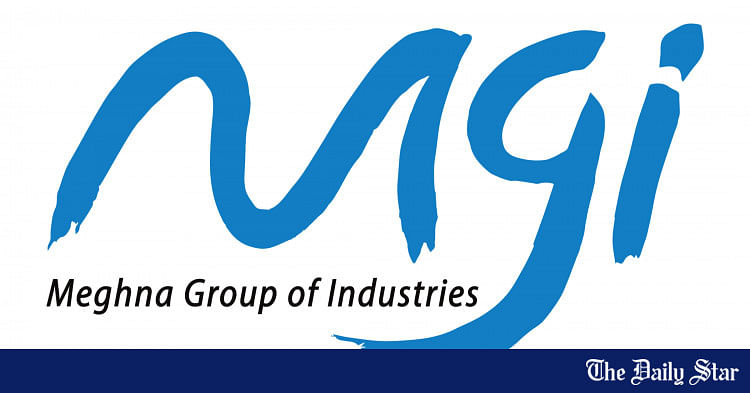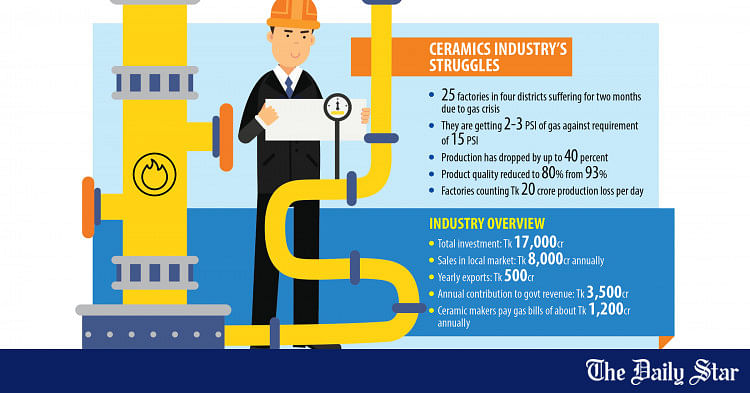Saif
Senior Member
- Messages
- 15,397
- Nation

- Axis Group


MGI expands ceramic tiles production with $45m investment
Of the investment, $19 million came from its own pockets whereas $26 million in the form of a syndicated loan, which was released recently, he said.
MGI expands ceramic tiles production with $45m investment

Meghna Ceramic Industries, a concern of the Meghna Group of Industries (MGI), has increased its production capacity with an investment of US $45 million (about Tk 500 crore) to grab a bigger share of the growing half a billion US dollar-worth tiles market.
Since July last year, the company's factory in Ashariar Char in Narayanganj, Dhaka's neighbouring district, has been churning out 51,000 square metres of "Fresh Ceramics" tiles per day, Assistant General Manager said Rajib Bhattacharjee.
A year ago, it was 31,000 square metres, he said.
Of the investment, $19 million came from its own pockets whereas $26 million in the form of a syndicated loan, which was released recently, he said.
The lead arranger, Prime Bank, a private commercial lender, provided $4 million while the Islamic Corporation for the Development of the Private Sector, a concern of the Islamic Development Bank Group, provided $22 million, said Bhattacharjee.
Repayable in 8 years, including a one-year grace period, the loan comes an interest rate of 3.75 percent plus the Secured Overnight Financing Rate (SOFR), he said.
The SOFR is a benchmark interest rate for dollar-denominated derivatives and loans that replaced the London Interbank Offered Rate (LIBOR). It varies from time to time, standing at around 4.3 percent in January 2023 whereas at 5.3 percent most recently.
"We used the syndicated loan for payment of import bill of necessary sophisticated machinery from Europe," informed Bhattacharjee.
With this, a total of $100 million has been invested into the facility, which uses technology adopted from the US, Germany, Italy and China and employs over 400 people, he said.
Of the initial $55 million invested in 2021, $20 million came from another syndicated loan arranged by Prime Bank, he said.
The expansion was to grab a share of the growing ceramic industry, spending capacity of people and rapid urbanisation over the past decade, said Bhattacharje.
Bangladesh has been witnessing an increasing demand for ceramic tiles for rising private and public construction thanks to urbanisation and the economy's steady growth.
Local and international companies invested $1.58 billion in the ceramics sector for producing tiles, tableware, and sanitaryware while directly employing nearly 20,000 people, according to the Bangladesh Ceramic Manufacturers & Exporters Association (BCMEA).
Of the investment, 62 percent or $979 million was meant for tiles.
Now, there are 31 ceramic tiles manufacturing facilities in the country with a combined annual production capacity of 20.70 lakh square metre.
An estimated $633 million-worth tiles were sold in the country in fiscal year 2022-23, it said.
The ceramic sector in Bangladesh caters to 80 percent of the total local demand for ceramic products, BCMEA said.
The local ceramic industry has registered an annual average growth rate of about 15 percent since fiscal year 2015-16, according to the BCMEA.
This was a strategic investment in recognition of the market demand and growth opportunities for ceramic products, said Shams A Muhaimen, deputy managing director (transaction banking, debt capital market & financial institutions), Prime Bank.
The ceramic tiles industry in Bangladesh exhibits strong demand fuelled by urbanisation, infrastructure development and a growing construction sector, making the project commercially viable, he said.
With a diversified product portfolio and expanding production capacity, the MGI is well-positioned to capitalise on this market demand and drive further growth and profitability, he noted.
The MGI has an extensive distribution network across the country, giving it another competitive edge, he added.
Meghna Ceramic Industries, a concern of the Meghna Group of Industries (MGI), has increased its production capacity with an investment of US $45 million (about Tk 500 crore) to grab a bigger share of the growing half a billion US dollar-worth tiles market.
Since July last year, the company's factory in Ashariar Char in Narayanganj, Dhaka's neighbouring district, has been churning out 51,000 square metres of "Fresh Ceramics" tiles per day, Assistant General Manager said Rajib Bhattacharjee.
A year ago, it was 31,000 square metres, he said.
Of the investment, $19 million came from its own pockets whereas $26 million in the form of a syndicated loan, which was released recently, he said.
The lead arranger, Prime Bank, a private commercial lender, provided $4 million while the Islamic Corporation for the Development of the Private Sector, a concern of the Islamic Development Bank Group, provided $22 million, said Bhattacharjee.
Repayable in 8 years, including a one-year grace period, the loan comes an interest rate of 3.75 percent plus the Secured Overnight Financing Rate (SOFR), he said.
The SOFR is a benchmark interest rate for dollar-denominated derivatives and loans that replaced the London Interbank Offered Rate (LIBOR). It varies from time to time, standing at around 4.3 percent in January 2023 whereas at 5.3 percent most recently.
"We used the syndicated loan for payment of import bill of necessary sophisticated machinery from Europe," informed Bhattacharjee.
With this, a total of $100 million has been invested into the facility, which uses technology adopted from the US, Germany, Italy and China and employs over 400 people, he said.
Of the initial $55 million invested in 2021, $20 million came from another syndicated loan arranged by Prime Bank, he said.
The expansion was to grab a share of the growing ceramic industry, spending capacity of people and rapid urbanisation over the past decade, said Bhattacharje.
Bangladesh has been witnessing an increasing demand for ceramic tiles for rising private and public construction thanks to urbanisation and the economy's steady growth.
Local and international companies invested $1.58 billion in the ceramics sector for producing tiles, tableware, and sanitaryware while directly employing nearly 20,000 people, according to the Bangladesh Ceramic Manufacturers & Exporters Association (BCMEA).
Of the investment, 62 percent or $979 million was meant for tiles.
Now, there are 31 ceramic tiles manufacturing facilities in the country with a combined annual production capacity of 20.70 lakh square metre.
An estimated $633 million-worth tiles were sold in the country in fiscal year 2022-23, it said.
The ceramic sector in Bangladesh caters to 80 percent of the total local demand for ceramic products, BCMEA said.
The local ceramic industry has registered an annual average growth rate of about 15 percent since fiscal year 2015-16, according to the BCMEA.
This was a strategic investment in recognition of the market demand and growth opportunities for ceramic products, said Shams A Muhaimen, deputy managing director (transaction banking, debt capital market & financial institutions), Prime Bank.
The ceramic tiles industry in Bangladesh exhibits strong demand fuelled by urbanisation, infrastructure development and a growing construction sector, making the project commercially viable, he said.
With a diversified product portfolio and expanding production capacity, the MGI is well-positioned to capitalise on this market demand and drive further growth and profitability, he noted.
The MGI has an extensive distribution network across the country, giving it another competitive edge, he added.




